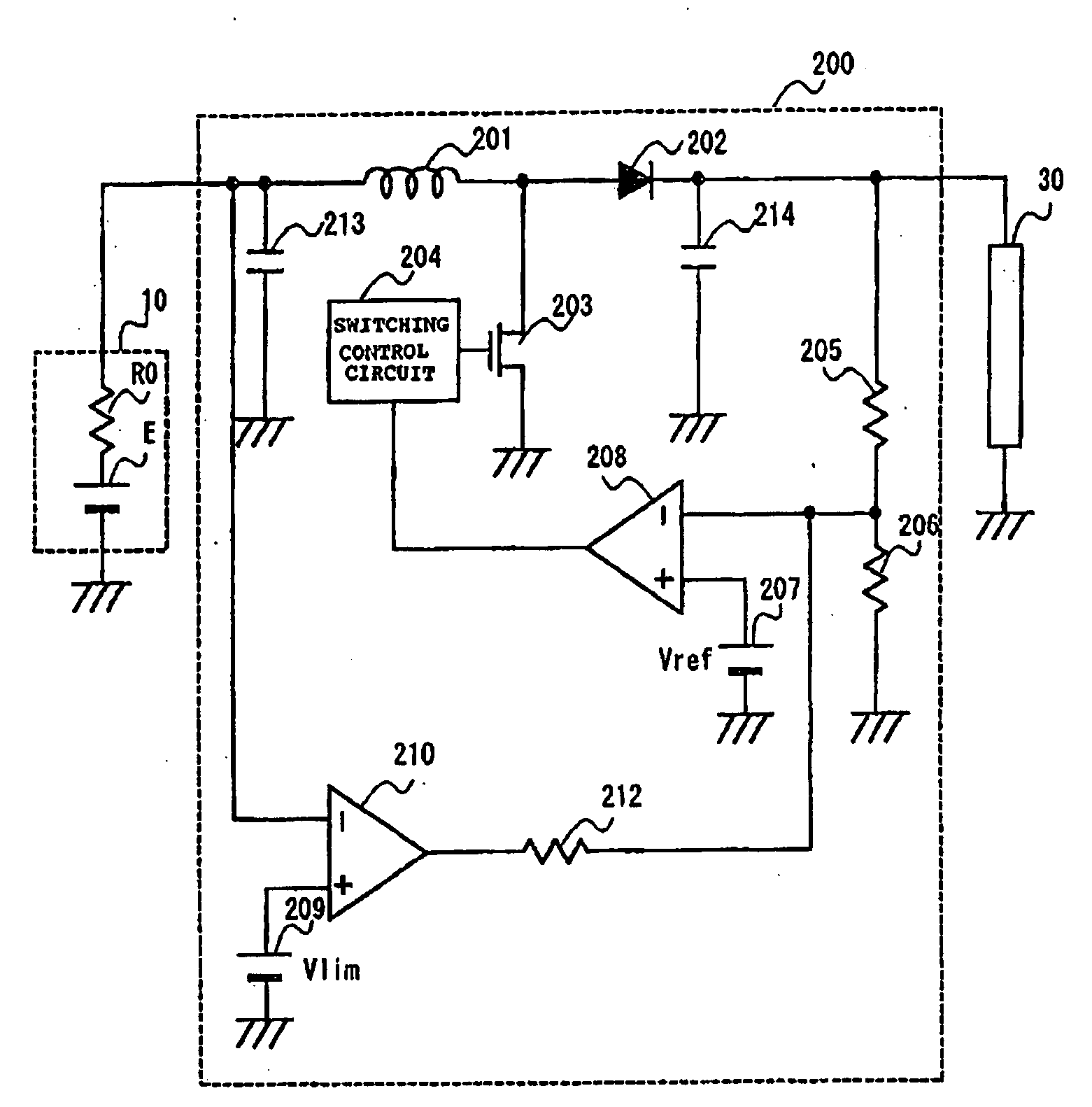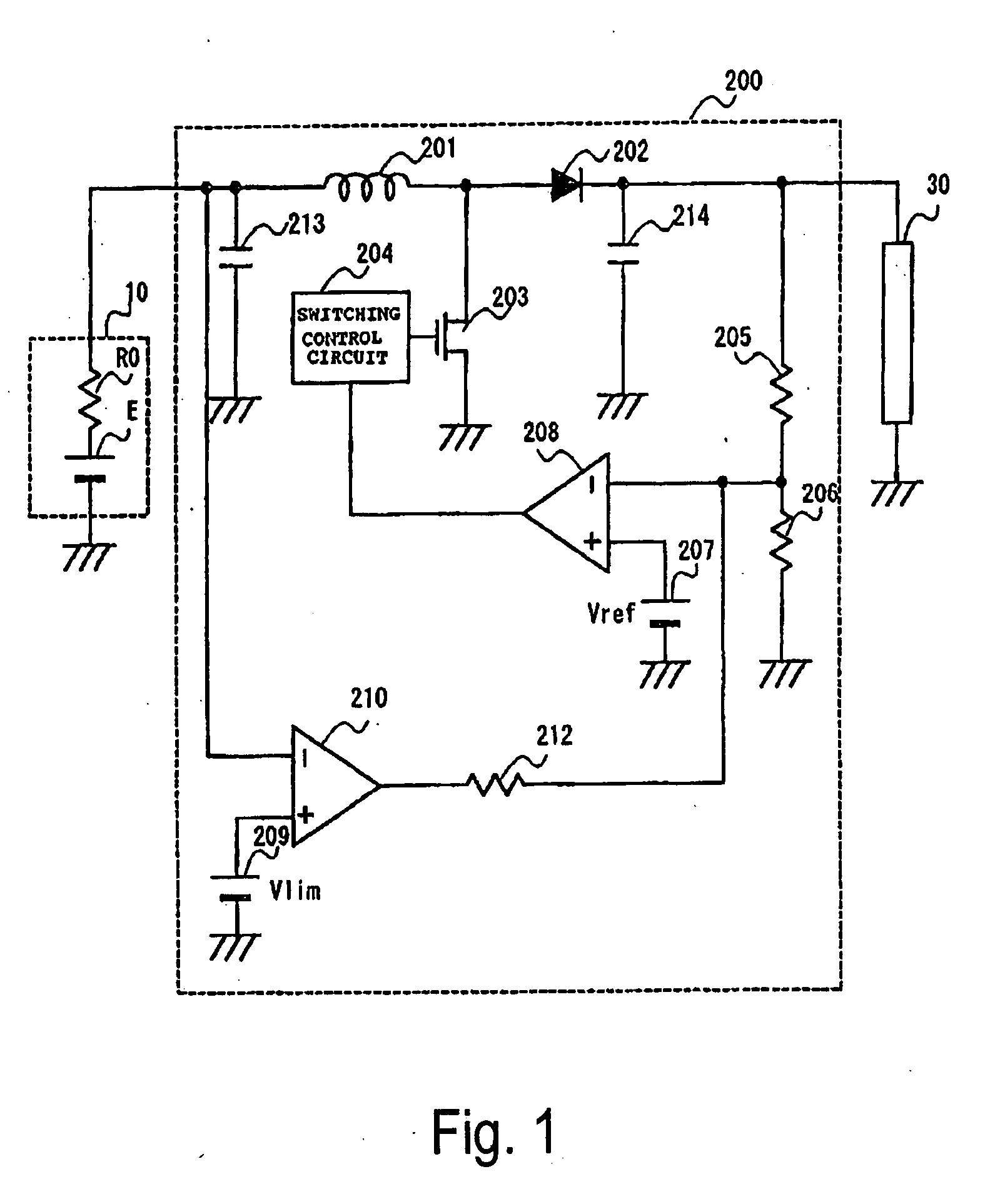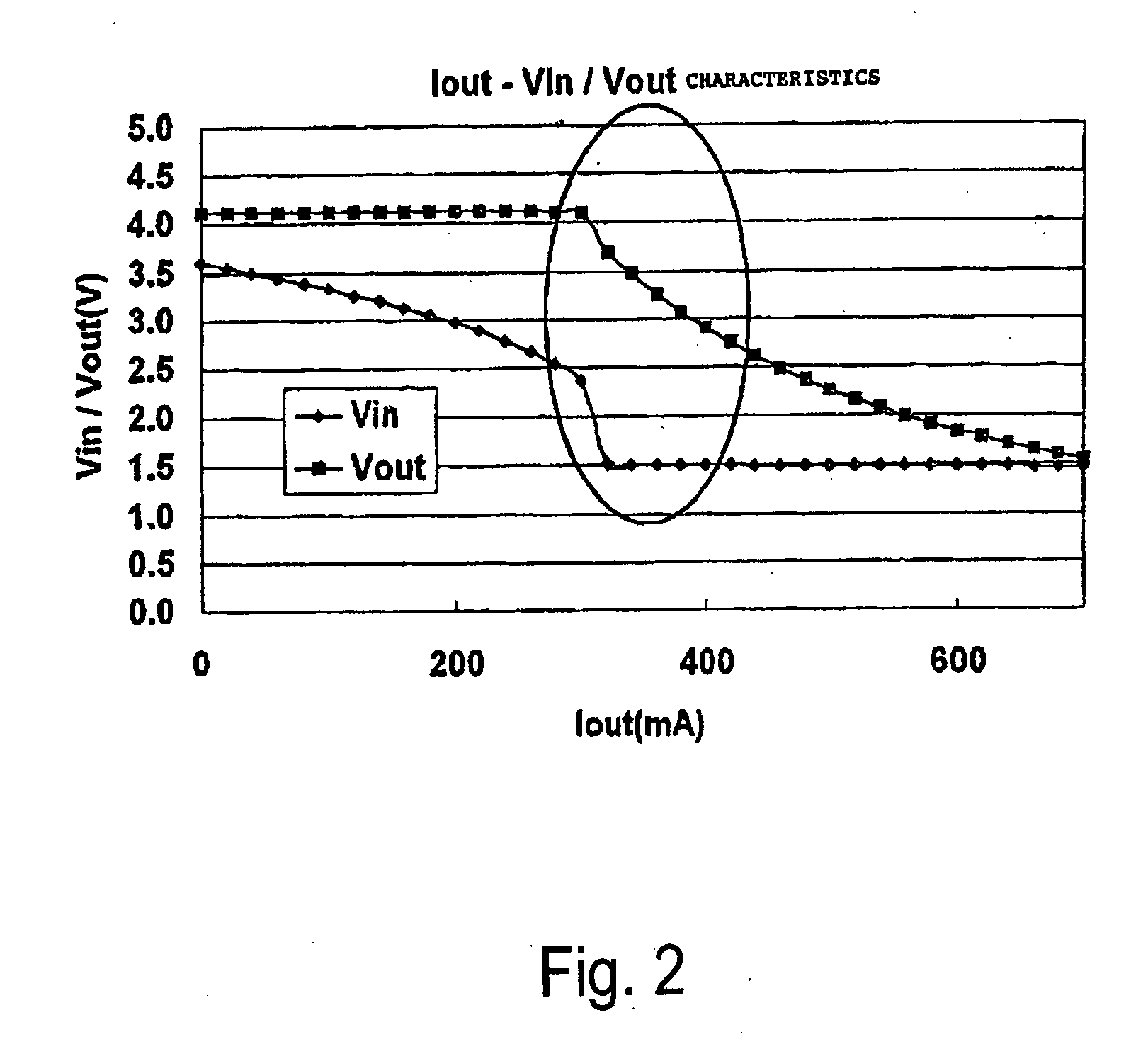Output control device for electric power source
- Summary
- Abstract
- Description
- Claims
- Application Information
AI Technical Summary
Benefits of technology
Problems solved by technology
Method used
Image
Examples
first preferred embodiment
[0044]FIG. 1 is a circuit diagram of an output control device 200 of an electric power source in accordance with a first preferred embodiment of the present invention.
[0045] The output control device 200 supplies power from a fuel cell 10 as an electric power source to a load 30.
[0046] The fuel cell 10 includes a power source E having a large internal impedance R0.
[0047] The output control device 200 includes a coil 201 receiving the output of the fuel cell 10, a field-effect transistor 203 for switching the output of the coil 201, a diode 202, a pulse-width modulation (PWM) circuit 204 for switch controlling the field-effect transistor 203, resistors 205 and 206 for detecting an output voltage Vout of the output control device 200, a reference voltage generator 207 for generating a reference voltage Vref controlling the PWM circuit 204, a differential amplifier 208 for generating a control signal for controlling the PWM circuit 204, a lower limit value setter 209 for setting a l...
second preferred embodiment
[0064]FIG. 4 is a circuit diagram of an output control device 300 of the electric power source in accordance with a second preferred embodiment of the present invention.
[0065] In accordance with the second preferred embodiment of FIG. 4, the output control device 300 supplies power to a load 30 from a fuel cell 10 as an electric power source. The output control device 300 includes a resistor 301 along an output line of the fuel cell 10. An amplifier 302 detects a voltage drop across the resistor 301, thereby detecting the output current of the fuel cell 10, namely, the input current Iin of the output control device 300.
[0066] The input current Iin, detected by the amplifier 302, is supplied to a positive input terminal of a comparator 310. The comparator 310 receives, at the negative input terminal thereof, an upper limit value Ilim of the input current Iin of the output control device 300 set by an upper limit value setter 309. The rest of the structure of the output control devi...
third preferred embodiment
[0075]FIG. 5 is a circuit diagram of an output control device 400 of the electric power source in accordance with a third preferred embodiment of the present invention.
[0076] As shown in FIG. 5, the output control device 400 supplies the load 30 with power from the fuel cell 10 as an electric power source. The output control device 400 monitors a variation ΔV in the output voltage of the fuel cell 10, namely, the input voltage Vin of the output control device 400.
[0077] Referring to FIG. 5, a capacitor 213 is connected to the input line from the fuel cell 10 with one terminal and the other terminal thereof grounded. A capacitor 214 is connected to a diode 202 with one terminal thereof connected to the output line of the diode 202 and with the other terminal thereof grounded.
[0078] The input line from the fuel cell 10 is connected to the output line of the diode 202 through a capacitor 403, and resistors 405 and 404. A transistor 406 is configured with the base thereof connected t...
PUM
 Login to View More
Login to View More Abstract
Description
Claims
Application Information
 Login to View More
Login to View More - R&D
- Intellectual Property
- Life Sciences
- Materials
- Tech Scout
- Unparalleled Data Quality
- Higher Quality Content
- 60% Fewer Hallucinations
Browse by: Latest US Patents, China's latest patents, Technical Efficacy Thesaurus, Application Domain, Technology Topic, Popular Technical Reports.
© 2025 PatSnap. All rights reserved.Legal|Privacy policy|Modern Slavery Act Transparency Statement|Sitemap|About US| Contact US: help@patsnap.com



